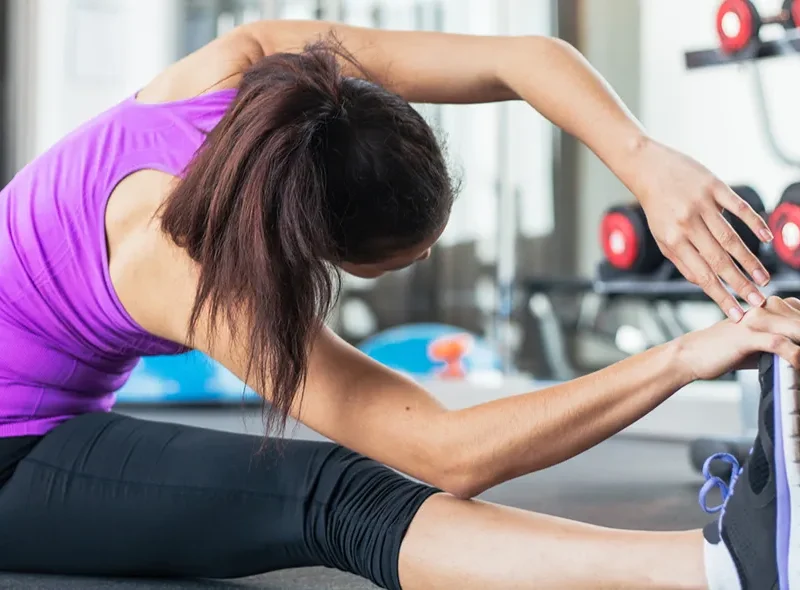Fitness isn’t just about achieving a sculpted physique; it’s about empowering yourself to live a healthier, happier life. Regardless of age, ability, or fitness level, everyone can benefit from incorporating physical activity into their routine. Fitness improves cardiovascular health, strengthens bones and muscles, reduces stress, boosts energy levels, and enhances overall well-being.

The key to unlocking these benefits lies in finding a fitness approach that works for you. This article explores the concept of exercise modifications and adaptations, demonstrating how to make physical activity accessible and enjoyable for everyone.
Understanding Your Starting Point
The first step towards inclusive fitness is recognizing that everyone starts at a different place. Consider these factors when designing your workout plan:
- Fitness Level: Are you a beginner, intermediate, or advanced exerciser?
- Physical Limitations: Do you have any injuries, chronic health conditions, or mobility issues?
- Experience: Have you ever exercised regularly, or are you starting fresh?
- Interests: What types of activities do you find fun and engaging?
Embracing Modifications: Making Fitness Accessible
The beauty of exercise lies in its versatility. Just because you can’t perform a specific exercise doesn’t mean you can’t reap the benefits of movement. Modifications allow you to adapt exercises to your current abilities, ensuring safety and effectiveness. Here are some key principles for modification:
- Reduce Impact: Exercises like jumping jacks can be modified to low-impact alternatives like marching or squats.
- Increase or Decrease Intensity: Make exercises easier by using lighter weights, doing fewer repetitions, or taking longer rest periods. Conversely, increase intensity by using heavier weights, doing more repetitions, or taking shorter rest periods.
- Focus on Different Muscle Groups: If an exercise targets a muscle group you can’t isolate, choose an alternative that works similar muscles.
- Change the Range of Motion: Modify the range of motion in an exercise to accommodate your limitations.
- Utilize Equipment: Resistance bands, stability balls, chairs, and even water bottles can enhance or modify exercises.
Examples of Modifications for Different Abilities:
- Beginners: Start with bodyweight exercises, focus on proper form, and gradually increase intensity and duration. Consider activities like walking, swimming, or yoga.
- Weight Loss: Focus on exercises that burn a significant amount of calories, such as cardio and circuit training. Combine these with strength training to build muscle mass, which helps burn more calories at rest.
- Strength Training: Modify traditional weightlifting exercises with bodyweight alternatives or lighter weights. Focus on proper form and controlled movements.
- Pregnant Women: Choose low-impact exercises like prenatal yoga, swimming, or walking. Avoid exercises that put stress on the abdomen or require lying on your back.
- Seniors: Focus on balance exercises, strength training with light weights or resistance bands, and low-impact activities like walking or stationary cycling.
- Individuals with Disabilities: There are modifications for nearly any exercise. People with lower body limitations can use upper body exercises, seated exercises, or adaptive equipment. People with visual impairments can exercise with a sighted partner or use audio cues.
Benefits of Modifications:
- Reduced Risk of Injury: Modifications ensure you don’t push your body beyond its limits, preventing injuries that can derail your fitness journey.
- Improved Form: Focusing on modifications can help you master proper form, maximizing the effectiveness of your exercise.
- Increased Confidence: Successfully performing modified exercises builds confidence and motivation to keep moving forward.
- Lifelong Fitness: Modifications allow you to continue exercising regardless of age or changing abilities, promoting lifelong well-being.
Finding the Right Support System:
Surrounding yourself with the right support system can make a significant difference in your fitness journey. Here are some resources:
- Certified Personal Trainers: A personal trainer can design a customized workout plan with modifications specific to your needs and goals.
- Adaptive Fitness Classes: Many gyms and community centers offer classes designed for people with disabilities.
- Online Resources: Websites and apps offer a wealth of information on modified exercises and inclusive fitness programs.
- Support Groups: Connecting with others who share your limitations can provide encouragement and motivation.
Conclusion: Fitness is a Journey, Not a Destination
Remember, fitness is a journey, not a destination. Embrace modifications, celebrate small victories, and most importantly, have fun while moving your body. By tailoring your workouts to your abilities and interests, you can unlock a world of health benefits and empower yourself to live a vibrant, active life.










